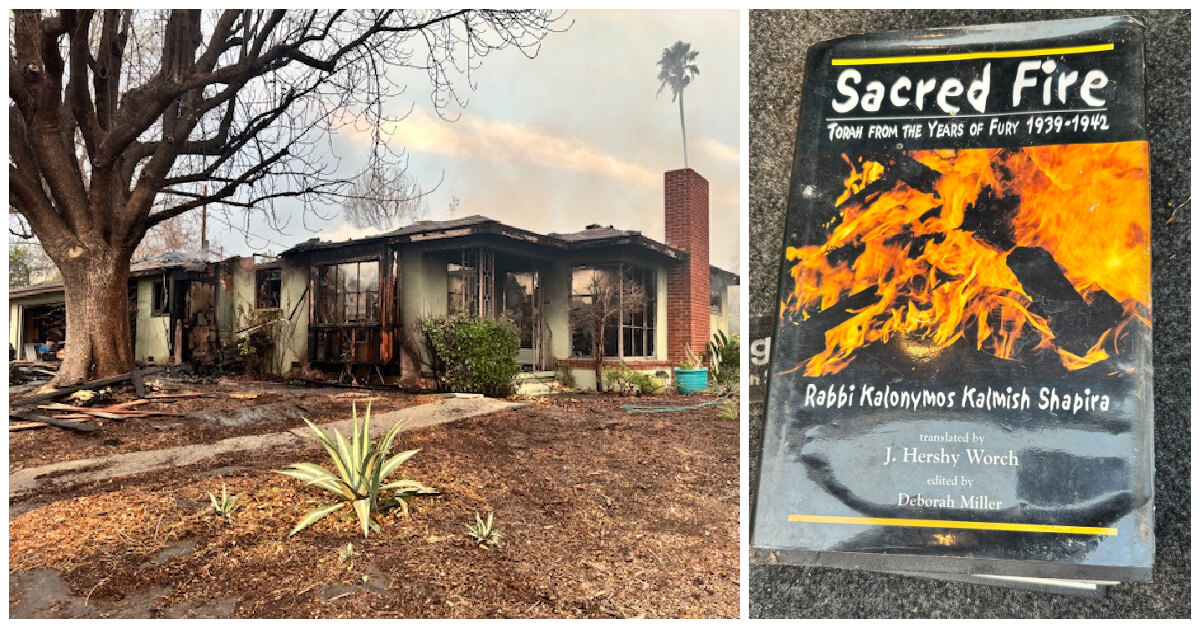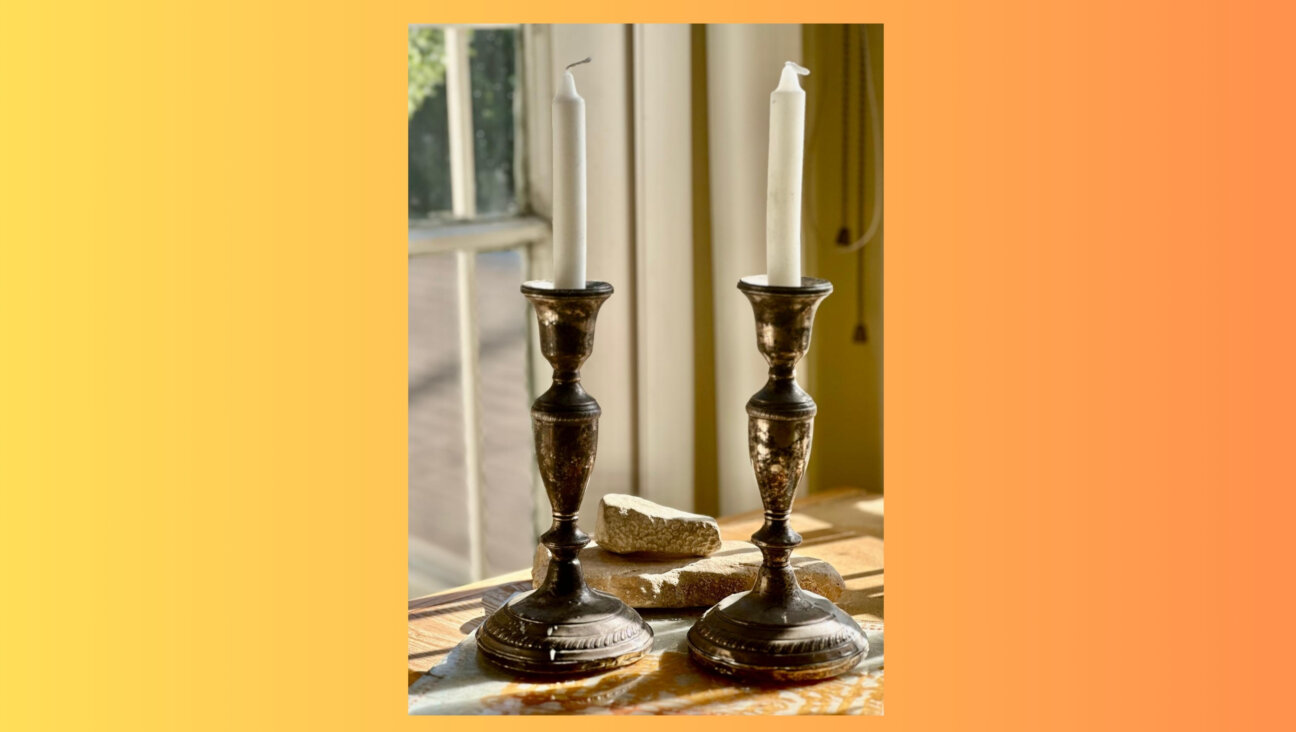Needlework Circle Knits Together Women of All Stripes
Before stretching squares of batting and fabric through her wooden quilting hoop, Miriam K. Sokoloff loads a needle with rose-colored thread and twists a knot on the end. She reaches across Judith Solomont, who is busy reducing old blue jeans to denim disks the size of dinner plates, and hands the needle to Reva Katz, who prefers beading to sewing. But Katz is game. She takes the needle and begins hemming a quilt banner that Solomont brought for her to work on. Pausing from her tracing and cutting to examine Katz’s work, Solomont says gently, “No. Not like that. Let me show you.” After brief instruction, Katz’s stitching goes from cramped and tight to long, smooth and invisible.
Sokoloff, Solomont and Katz are among the 30 or so members of the Greater Boston Chapter of the Pomegranate Guild of Judaic Needlework. There are 32 chapters nationwide, a guild in Canada, and who knows how many women connected by e-mail and the Internet from places as far flung as Norway and New Zealand.
Knitting shops, beading stores and sewing establishments dot the centers of Boston area towns and cities, testifying to the revival of what’s primarily women’s craftwork. For a serious needleworker such as Sokoloff, there’s no shortage of guilds, clubs and collectives to join. But she is Orthodox, and found that too often these groups meet on Saturdays and that she couldn’t summon up much enthusiasm for certain projects, such as Christmas tree skirts, that her fellow stitchers assumed would have universal appeal. When she first learned of the Pomegranate Guild, she didn’t need much prodding to join. “You can be with people who are happy making challah covers,” she said — or, for that matter, finely beaded tallit bags, needlepoint tzedaka boxes, or matzo pouches painstakingly chenilled to mimic matzo’s striated texture.
A summertime exhibit at the Brookline Public Library gives a flavor for the range and originality of the “Poms,” as they call themselves. “My husband makes Chanukah special,” reads a humble, framed needlepoint the size of a slice of bread. Red, white and blue strung beads dangle from the corners of Judith Solomont’s cheerfully patriotic challah cover. A magnificent self-portrait in cloth, thread and quilting depicts the artist, Laura Rosenspan, sustained by her roots and her loves: Her image floats, cradling bolts of fabric, above the twinkling night skyline of New York City, her birthplace. Strong, geometric Stars of David rise behind her, and the glorious gables of her Sharon, Mass., Victorian home promise warmth and shelter. Every piece on display is intensely personal, and every bead, button and stitch is a reminder that these are the work of women’s hands.
Members range from agnostic to Orthodox, from novices to professional artisans. The Guild’s Greater Boston chapter is an accepting, supportive gathering of compulsive needleworkers and passionate Jews who otherwise might be segregated by synagogue affiliation or by their widely diverse levels of skill and artistry.
Katz’s work tends more to the secular, but Sokoloff and Solomont admire her resourcefulness, the way she sees potential where others see junk. A funky bracelet with matching earrings that Katz made of buttons and beads she rescued from an old belt and tired necklace was displayed at the Brookline library exhibit, even though there was nothing distinctly “Jewish” about them. At the Guild’s monthly meetings, all are created equal, from weekend knitters to pros who sell their needlework in area galleries. Each woman has something to offer, and they constantly challenge each other — noncompetitively — to learn more, to push their skills, to try something new. The Guild also hosts speakers: There was the rabbi who addressed the group on the biblical injunctions regarding the weaving of cloth, and the woman who taught the technique of velvet embossing. Group projects, such as the pomegranate-adorned chuppah the guild rents to couples soon to be married, reinforce camaraderie and cohesion. Solomont had always relied on prefab kits and patterns before joining the guild. Now, she can design, plan and execute a project from scratch.
Back in Sokoloff’s workroom, Solomont has accumulated a stack of 10 denim circles out of the 63 she’ll need to complete a bedspread for her grandson in Israel. Katz has expertly finished one edge of the guild’s membership quilt. Sokoloff has been describing a simple vest she sewed for Purim. It’s of regal purple rayon velvet, and she embossed it with hamantaschen stamps custom made for her by an Israeli Internet colleague. She brings the vest into the room to show everyone. But she also brings something else. It’s a crisply tailored woman’s cropped jacket, but the burgundies, beiges, blacks and navies feel masculine. It’s a patchwork of busy, silky swatches, and several pieces bear musical motifs: eighth notes, quarter notes, staff lines and treble clefs. Her father, she reports, was Cantor Simon Kandler, and he died in 2001 at the age of 100. “These were his ties,” she says.
Jeri Zeder is a freelance writer in Lexington, Mass.
A message from our Publisher & CEO Rachel Fishman Feddersen

I hope you appreciated this article. Before you go, I’d like to ask you to please support the Forward’s award-winning, nonprofit journalism so that we can be prepared for whatever news 2025 brings.
At a time when other newsrooms are closing or cutting back, the Forward has removed its paywall and invested additional resources to report on the ground from Israel and around the U.S. on the impact of the war, rising antisemitism and polarized discourse.
Readers like you make it all possible. Support our work by becoming a Forward Member and connect with our journalism and your community.
— Rachel Fishman Feddersen, Publisher and CEO






















